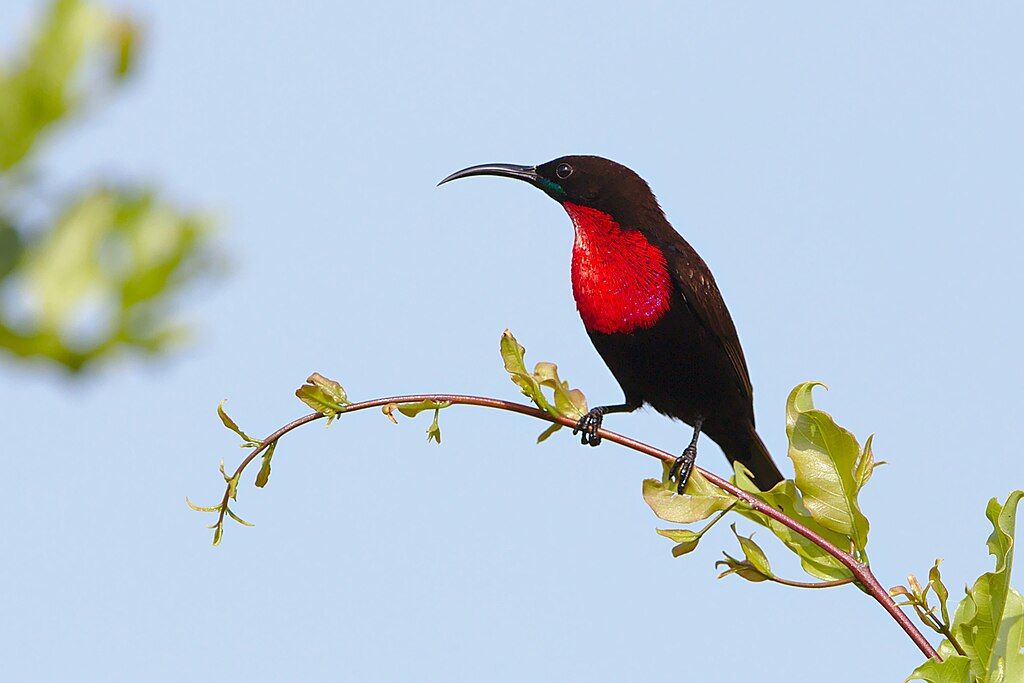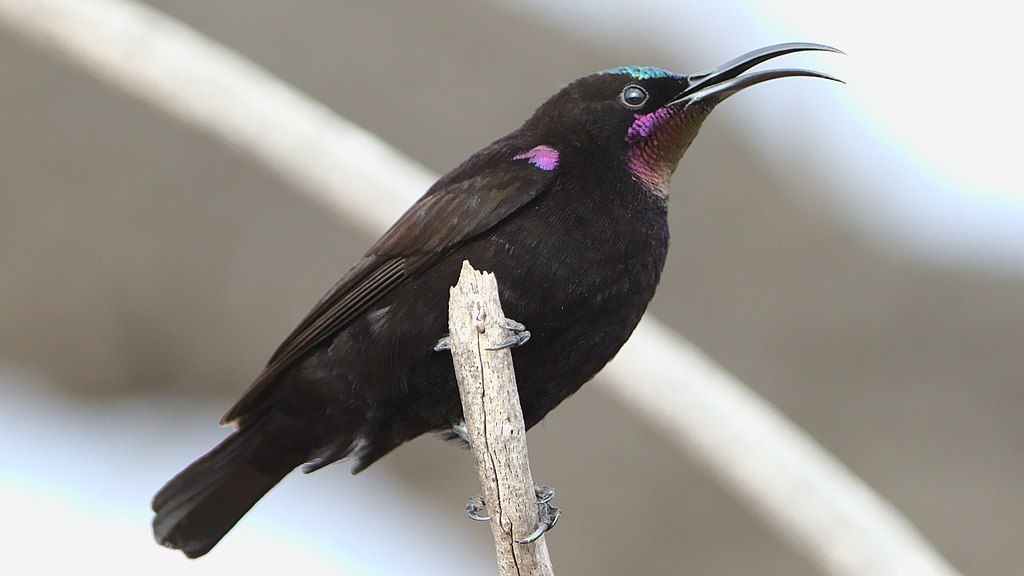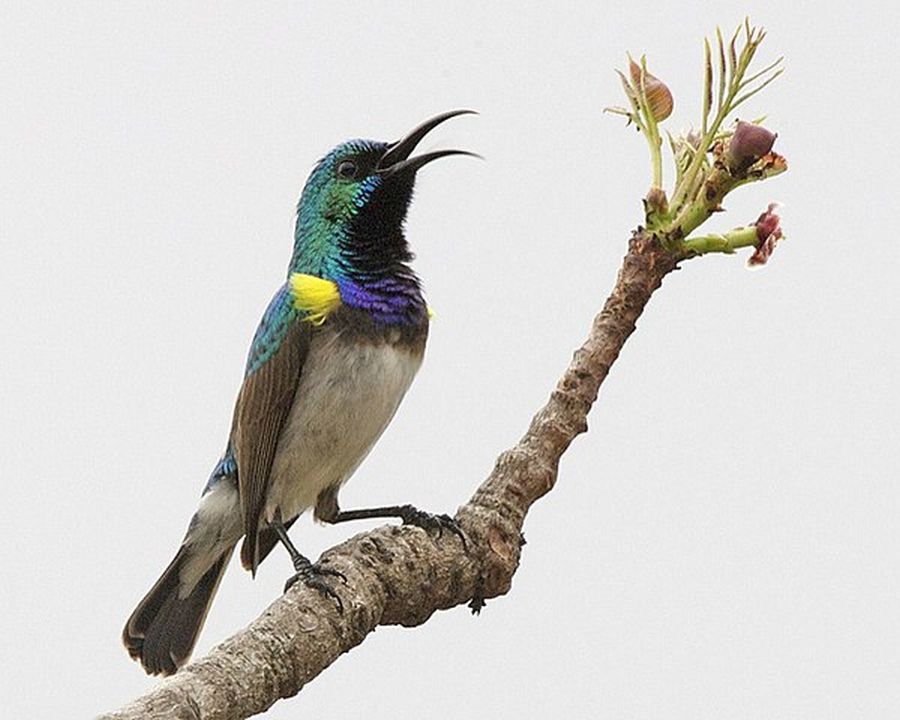
31 January 2024: Day 13, Livingstone, Zambia — Road Scholar Southern Africa Birding Safari. Click here to see (generally) where I am today.
Africa has no hummingbirds (Trochilidae) but they have a family of nectar-feeding birds with many of the same characteristics: Sunbirds (Nectariniidae). Though the two families are unrelated they’re an example of convergent evolution, equipped with the same tools and habits.
The similarities between hummingbirds and sunbirds are striking. Both have:
- Brilliantly colored males, often iridescent
- Sexually dimorphic females
- Long curved bills for collecting nectar
- Short wings and fast, direct flight
- Feed primarily on nectar
- Feed insects and spiders to their young
- Are important flower pollinators
- Prefer red or orange flowers that are long and tubular,
- Can enter torpor when it’s cold.
Their differences are also interesting:
Hummingbirds vs. Sunbirds
| Hummingbirds | Sunbirds |
|---|---|
| New World only | Old World: Africa, Asia, Australasia |
| Range in size from 1.59 g to 20 grams | Range in size from 5 g to 45 grams |
| Hover and have tiny feet | Perch with normal feet |
| Don't hang out with family | Usually found in pairs; sometimes in family or larger groups |
| Some make long migrations | Sedentary or short-distance migrations |
| Hummingbird beaks can't pierce flowers. That's the job of flowerpiercers. | Sunbirds pierce flowers if the nectar is too hard to reach. |
On our tour we encountered three species of sunbirds: scarlet-chested sunbird (Chalcomitra senegalensis), amethyst sunbird (Chalcomitra amethystina) and white-bellied sunbird (Cinnyris talatala).
The scarlet-chested is very iridescent and, amazingly, is considered a pest in cocoa plantations because it spreads parasitic mistletoes according to Wikipedia.
The amethyst sunbird has fewer iridescent spots …

… but an interesting voice.
The white-bellied sunbird was a bonus. I did not expect to see him.

Beautiful as sunbirds are, I’m glad we have hummingbirds instead.